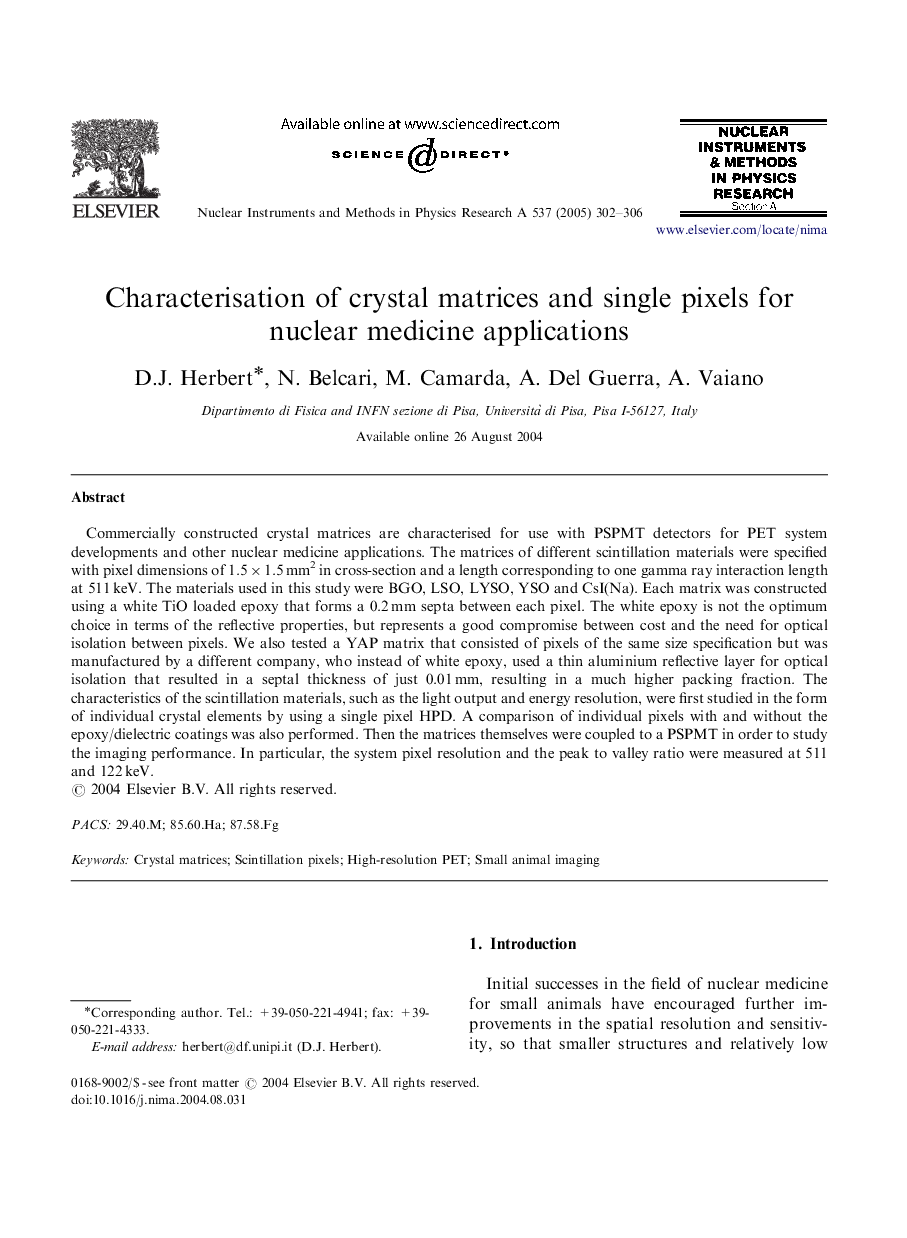| Article ID | Journal | Published Year | Pages | File Type |
|---|---|---|---|---|
| 9845906 | Nuclear Instruments and Methods in Physics Research Section A: Accelerators, Spectrometers, Detectors and Associated Equipment | 2005 | 5 Pages |
Abstract
Commercially constructed crystal matrices are characterised for use with PSPMT detectors for PET system developments and other nuclear medicine applications. The matrices of different scintillation materials were specified with pixel dimensions of 1.5Ã1.5Â mm2 in cross-section and a length corresponding to one gamma ray interaction length at 511Â keV. The materials used in this study were BGO, LSO, LYSO, YSO and CsI(Na). Each matrix was constructed using a white TiO loaded epoxy that forms a 0.2Â mm septa between each pixel. The white epoxy is not the optimum choice in terms of the reflective properties, but represents a good compromise between cost and the need for optical isolation between pixels. We also tested a YAP matrix that consisted of pixels of the same size specification but was manufactured by a different company, who instead of white epoxy, used a thin aluminium reflective layer for optical isolation that resulted in a septal thickness of just 0.01Â mm, resulting in a much higher packing fraction. The characteristics of the scintillation materials, such as the light output and energy resolution, were first studied in the form of individual crystal elements by using a single pixel HPD. A comparison of individual pixels with and without the epoxy/dielectric coatings was also performed. Then the matrices themselves were coupled to a PSPMT in order to study the imaging performance. In particular, the system pixel resolution and the peak to valley ratio were measured at 511 and 122Â keV.
Related Topics
Physical Sciences and Engineering
Physics and Astronomy
Instrumentation
Authors
D.J. Herbert, N. Belcari, M. Camarda, A. Del Guerra, A. Vaiano,
